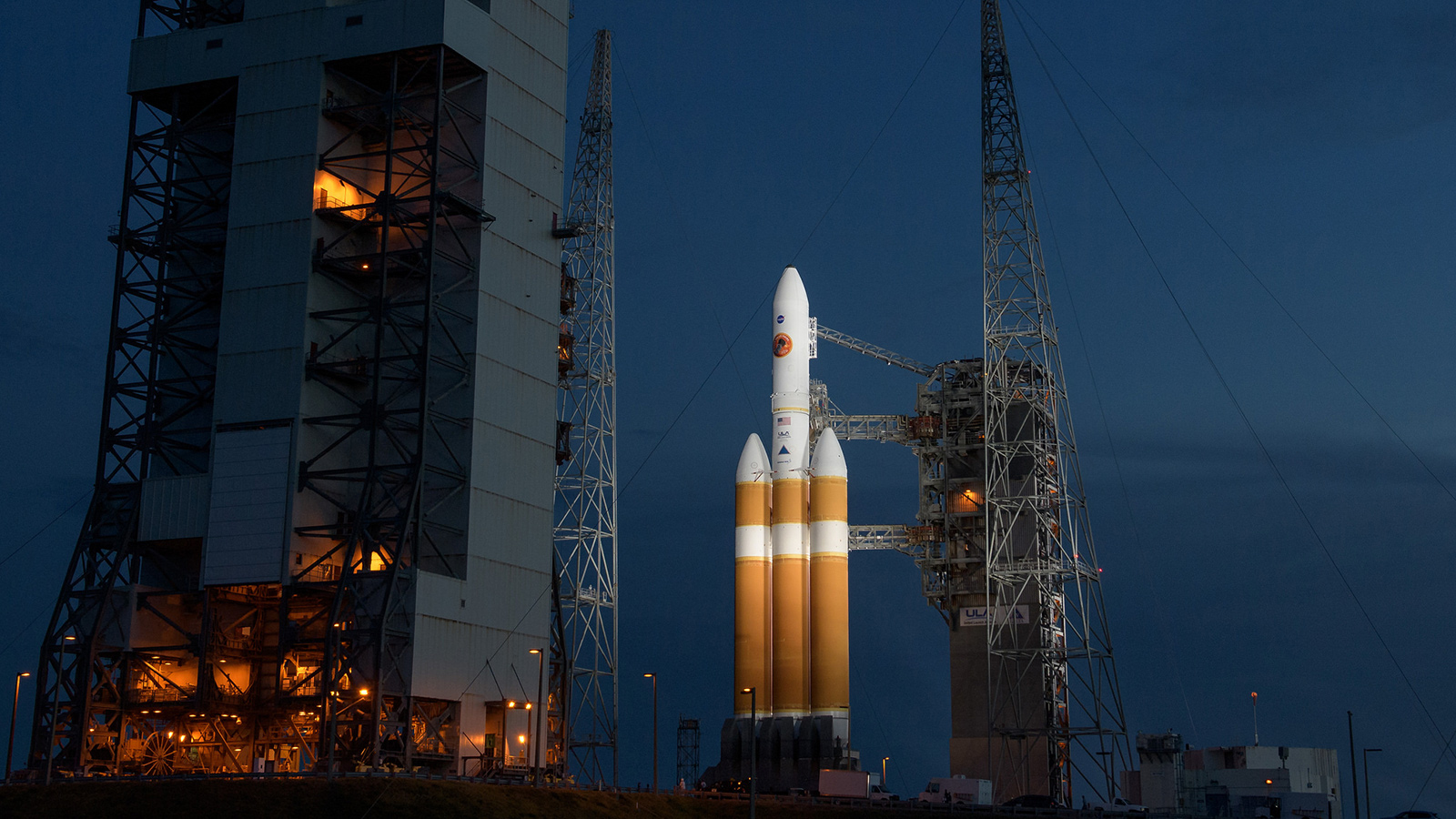Stay Up to Date
Submit your email address to receive the latest industry and Aerospace America news.
Engineers will block the sun’s heat with newer versions of technologies developed for the space shuttle fleet.
Aug. 13 update: The Parker Solar Probe launched Aug. 12. NASA said that the spacecraft’s solar arrays deployed and the spacecraft is operating on its own power.
Engineers worked for a decade designing heat shielding for NASA’s Parker Solar Probe that would be lightweight, reflective and durable enough for the spacecraft to become the first to fly into the sun’s outermost atmosphere, called the corona, and address the mystery of why this region is hotter than the region closer to the surface.
Built at the Johns Hopkins University Applied Physics Lab, Parker is scheduled to launch on Aug. 11 on a United Launch Alliance Delta 4 Heavy from Cape Canaveral, Florida. Successive orbits around the sun will take Parker as close as 6.4 million kilometers from the surface, exposing its heat shield to temperatures of 1,377 Celsius.
NASA first discussed the idea of sending a probe near the sun when the agency was founded in 1958. “Every couple of decades since then, NASA sat down and said, ‘OK, can we do this?’” said Adam Szabo, NASA’s mission scientist for the Parker Solar Probe.
Parker’s instruments will gather data about magnetic fields and particles from the shadow of a 2.43-meter-diameter, 11.4-centimeter-thick heat shield that will protect the instruments from the searing sunlight. Autonomous navigation software will ensure hydrazine thrusters keep the shield pointed at the sun to maintain a tolerable operating temperature of 30 degrees Celsius.
The shield consists of a carbon foam core sandwiched between two panels of a composite derived from the reinforced carbon-carbon that protected the leading edges of the space shuttle wings. The shield sits atop a truss made of titanium, a metal that can endure the 315-degree Celsius heat it is expected to face.
Testing the heat shield for durability was “very difficult,” said Betsy Congdon, the lead engineer at the Applied Physics Laboratory for the thermal protection system. “The difficulty is testing for those high temperatures in vacuum, so we tested at a variety of facilities all over the [U.S.],” including at NASA Goddard Space Flight Center’s thermal vacuum chamber in Maryland.
Designers simulated the temperature fluctuations the probe will face on each orbit, as it flies toward the sun and then away from it. In fact, Parker will fly by Venus seven times through 2024, a series of gravity assists whose momentum will send the probe deeper and deeper into the sun’s atmosphere.
The shield’s carbon foam supplied by secondary contractor Ultramet of California is a stronger version of a foam the company has sold as a bone replacement material, though it is still 97 percent air.
The shield panels, built by Texas-based secondary contractor Carbon-Carbon Advanced Technologies, are made from a “thinner, next generation version” of the shuttle’s reinforced carbon-carbon, Congdon said. To reflect as much light from the sun as possible, researchers at Johns Hopkins’ main campus created the recipe for a ceramic-based white coating that was sprayed evenly across the outer shield panel by Alabama-based aerospace materials contractor Plasma Processes.
Designers also had to find a way to protect the probe’s electricity-generating solar arrays during the hottest part of each orbit. As Parker approaches the sun, the arrays will be folded to a shallow angle to reduce exposure to sunlight, “otherwise they could melt,” Szabo said. They will extend again as Parker heads away from the sun.
Pipes beneath the solar arrays will also pump water back and forth from a radiator within the titanium truss to shed heat into space.
“Space is dark, so you can keep the water cool if you keep it out of the sunshine,” Szabo said.
Scientists hope to learn about the acceleration and origin of solar wind, charged particles that course through our solar system after emanating from the corona, and how to better predict more intense blasts of magnetic energy from the sun that could disrupt electronics on satellites. The probe’s namesake, heliophysicist Eugene Parker, 89, a professor emeritus at the University of Chicago, predicted the existence of the solar wind in 1958.
You can read a more detailed version of this article in the September print magazine.
About Tom Risen
As our staff reporter from 2017-2018, Tom covered breaking news and wrote features. He has reported for U.S. News & World Report, Slate and Atlantic Media.
Related Posts
Stay Up to Date
Submit your email address to receive the latest industry and Aerospace America news.






